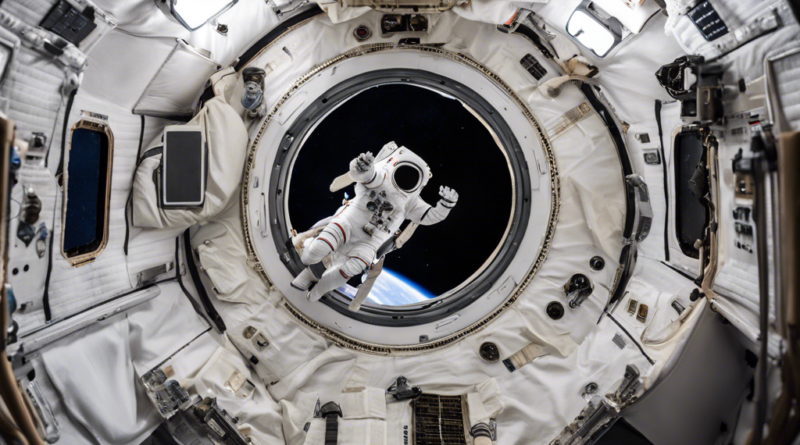Astronauts Stranded in Space: The Unexpected Journey of NASA’s Boeing Starliner Mission
In June 2024, NASA launched the Boeing Starliner spacecraft, carrying astronauts Sunita Williams and Barry Wilmore on what was initially planned as a short, eight-day mission. However, over 80 days later, the astronauts remain aboard the International Space Station (ISS), with their return still uncertain. The Starliner launched on June 5 and docked at the ISS on June 6, but technical problems have since prevented NASA from executing the return mission.
The Space Mission: A Brief Overview
Sunita Williams is currently leading the Crew Flight Test mission aboard Boeing’s Starliner, marking her third mission to the ISS. This 2024 mission focused on expanding and maintaining the station’s capabilities while conducting crucial scientific research. Williams was chosen as mission commander due to her extensive experience in long-duration spaceflights and space station management.
The mission was initially set for just over a week to test the Starliner’s critical systems, including environmental controls, displays, and thrusters. These tests are essential for ensuring that the spacecraft can safely transport astronauts to and from the ISS in the future.
The Challenges: An Extended Stay in Space
What began as a short mission has now turned into a months-long ordeal. Technical issues with the Starliner’s thrusters have extended Williams’ and Wilmore’s stay on the ISS until at least February 2025. A helium leak in the Starliner’s propulsion system was detected at launch, and additional leaks emerged during the journey to the ISS. Five of the Starliner’s thrusters malfunctioned at one point, with only four successfully restarted.
These issues culminated during the docking procedure, where overheating of a Teflon seal in the thruster system restricted the flow of the oxidizer, creating further complications.
As of September 2024, both astronauts remain aboard the ISS, where they continue to monitor the situation. NASA has confirmed that the station is well-stocked with oxygen and supplies to support the crew until their rescheduled return.
The Health Implications of Extended Spaceflight
Extended time in space comes with unique physical challenges. Williams and Wilmore are already experiencing some of the well-known effects of long-term exposure to microgravity. These include muscle atrophy, loss of bone density, and cardiovascular strain. Williams has also reported vision problems, a condition known as Spaceflight-Associated Neuro-Ocular Syndrome (SANS), caused by fluid buildup in the head during prolonged stays in space.
Exposure to cosmic radiation is another risk. This can lead to DNA damage, with potential long-term effects such as cancer, cataracts, and nervous system degradation. Additionally, isolation from friends and family can lead to emotional and psychological stress, further complicating life aboard the ISS.

The Importance of the 2024 Space Mission
Despite the challenges, the extended mission offers valuable opportunities for scientific research. Williams and Wilmore have been conducting experiments on how microgravity affects human physiology, including bone density, muscle function, and cardiovascular health. This research is vital for preparing astronauts for future long-duration missions, such as those to the Moon and Mars.
NASA Administrator Bill Nelson has emphasized the importance of safety in space exploration, even as the agency works toward advancing technology. The 2024 mission also underscores the value of NASA’s partnerships with private companies like Boeing and SpaceX, which are key players in the future of human spaceflight.
Looking Ahead: The Future of Space Travel
Williams and Wilmore are now slated to return to Earth in February 2025, not aboard the Starliner, but on SpaceX’s Dragon capsule, which successfully docked with the ISS in September 2024 as part of NASA’s Space Crew-9 mission. This collaboration highlights the crucial role of private companies in ensuring the safety and success of space missions.
The extended stay has also tested the astronauts’ resilience and adaptability. Sunita Williams has spoken about key advancements in space technology that will shape the future, such as miniaturization, advanced propulsion systems, and AI for autonomous navigation. These innovations, along with sustainable space habitats and the rise of commercial spaceflight, will be crucial for humanity’s future endeavours in space exploration.
Conclusion
What was meant to be a routine test mission for Boeing’s Starliner has turned into an unexpected, extended space adventure. While Sunita Williams and Barry Wilmore face the challenges of an extended stay aboard the ISS, their work continues to contribute valuable knowledge to the field of space exploration. Their return to Earth, now planned for February 2025, will mark the end of a mission that has tested both the technology of commercial spaceflight and the endurance of the human spirit.
For more such interesting blogs, visit https://vichaardhara.co.in/


